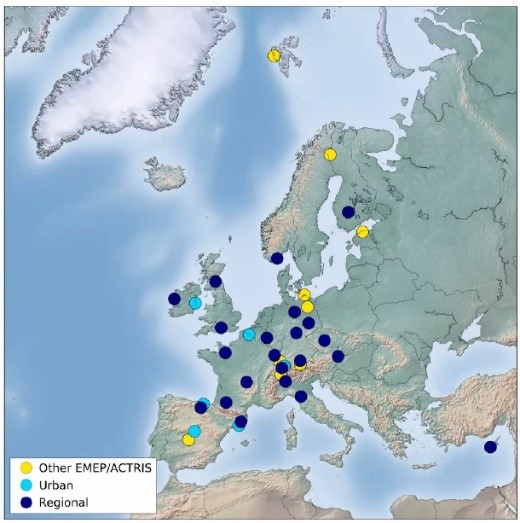
CAO joins pan-European study on Ozone
It is mid-July 2022, and yet another heatwave covers most of the European continent. As those heatwaves become more and more frequent in a warming climate, they are usually accompanied with abnormally high Ozone concentrations – at the time of writing – Ozone concentrations are at 58 ppb (part-per-billion) at CAO-AMX background station. Exceeding 60 ppb for 8h in a day, violates the EU air quality standards and can result to legal implications.
Ozone is a major air pollutant, one of two (with particulate matter) primarily responsible for air quality related hospitalizations and global mortality. Ozone has also a complex formation mechanism, which is not directly emitted by any natural or human activity. It is the result of photochemistry involving nitrogen oxides (NO, NO2) and volatile organic compounds (VOCs, e.g. terpenes that give there smell to plants and trees, or solvents, benzene and thousands of other species emitted by human activities and products).
To this date, this complex and non-linear chemistry involved in the formation of Ozone is still not fully captured in computer models. A case study for summer 2018 shows how model predictions were well below the observed Ozone levels across Europe.
To eliminate this knowledge gap, the co-operative program for monitoring and evaluation of the long-range transmission of air pollutants in Europe (EMEP) has organized a Pan-European study to monitor both Ozone and its precursors (NO, NO2 and VOCs). 30 stations across Europe are joining this intense campaign, among them CAO-AMX of CARE-C of The Cyprus Institute, the only station located East of Austria and Estonia.

In Cyprus, the Cyprus Atmospheric Observatory (CAO) and the Department of Labor Inspection (DLI) are collaborating to ensure that during the period of the study (starting July 12th), a complete and quality dataset will be obtained through the observatory at Agia-Marina Xyliatou. CAO is monitoring oxygenated VOCs (PTR-ToF-MS) while DLI is monitoring Ozone (UV absorption), Nitrogen Oxides (chemiluminescence), hydrocarbon (GC-FID), elemental and organic carbon (filter analysis).
With this dataset, the modeling community will be able to better constrain the Ozone formation, and potentially fill the knowledge gap leading until now to inaccurate Ozone predictions.



